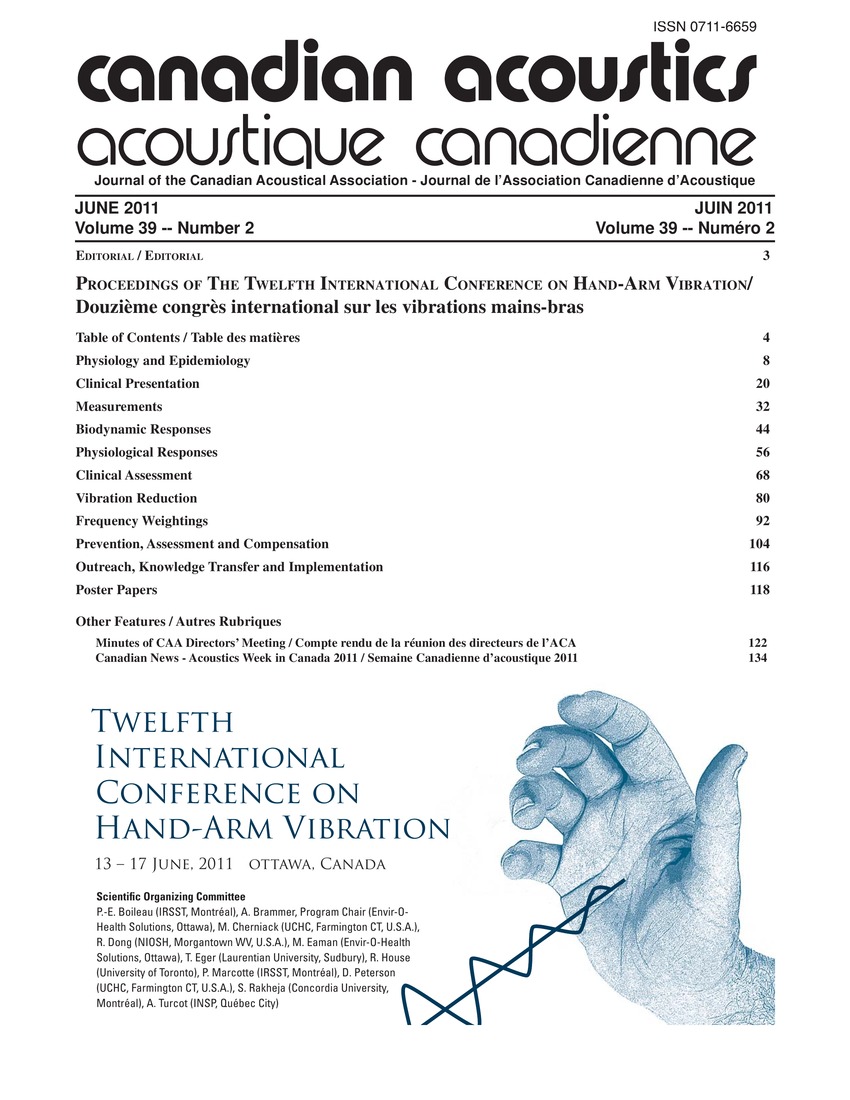Effect of work rest schedule on perceived discomfort score and thermal threshold shift of operators using hand-held vibrating machines
Mots-clés :
Drilling operation, Low level, Rest periods, Similar pattern, Threshold shifts, Vibrating machines, Visual analog scale, Visual analogue scale, Work outputRésumé
A work-rest schedule for optimum work output in a hypothetical drilling operation is identified by assessing operator discomfort and thermal threshold shifts (TTS) in the fingertips under conditions of variable work-rest conditions. A perceived discomfort score was recorded on visual analog scale and the Visual Analogue Scale was labeled as 0 discomfort, 5 for moderate discomfort, and 10 for extreme discomfort. The results of the study showed similar patterns for perceived discomfort score and TTS. The results also show that the rest duration of 20 minutes is not sufficient to recover fully and perform the next work. A low level of discomfort and thermal TTS are observed when the drilling task is performed for one minute duration with a rest period of three minutes.Fichiers supplémentaires
Publié-e
Comment citer
Numéro
Rubrique
Licence
Author Licensing Addendum
This Licensing Addendum ("Addendum") is entered into between the undersigned Author(s) and Canadian Acoustics journal published by the Canadian Acoustical Association (hereinafter referred to as the "Publisher"). The Author(s) and the Publisher agree as follows:
-
Retained Rights: The Author(s) retain(s) the following rights:
- The right to reproduce, distribute, and publicly display the Work on the Author's personal website or the website of the Author's institution.
- The right to use the Work in the Author's teaching activities and presentations.
- The right to include the Work in a compilation for the Author's personal use, not for sale.
-
Grant of License: The Author(s) grant(s) to the Publisher a worldwide exclusive license to publish, reproduce, distribute, and display the Work in Canadian Acoustics and any other formats and media deemed appropriate by the Publisher.
-
Attribution: The Publisher agrees to include proper attribution to the Author(s) in all publications and reproductions of the Work.
-
No Conflict: This Addendum is intended to be in harmony with, and not in conflict with, the terms and conditions of the original agreement entered into between the Author(s) and the Publisher.
-
Copyright Clause: Copyright on articles is held by the Author(s). The corresponding Author has the right to grant on behalf of all Authors and does grant on behalf of all Authors, a worldwide exclusive license to the Publisher and its licensees in perpetuity, in all forms, formats, and media (whether known now or created in the future), including but not limited to the rights to publish, reproduce, distribute, display, store, translate, create adaptations, reprints, include within collections, and create summaries, extracts, and/or abstracts of the Contribution.


